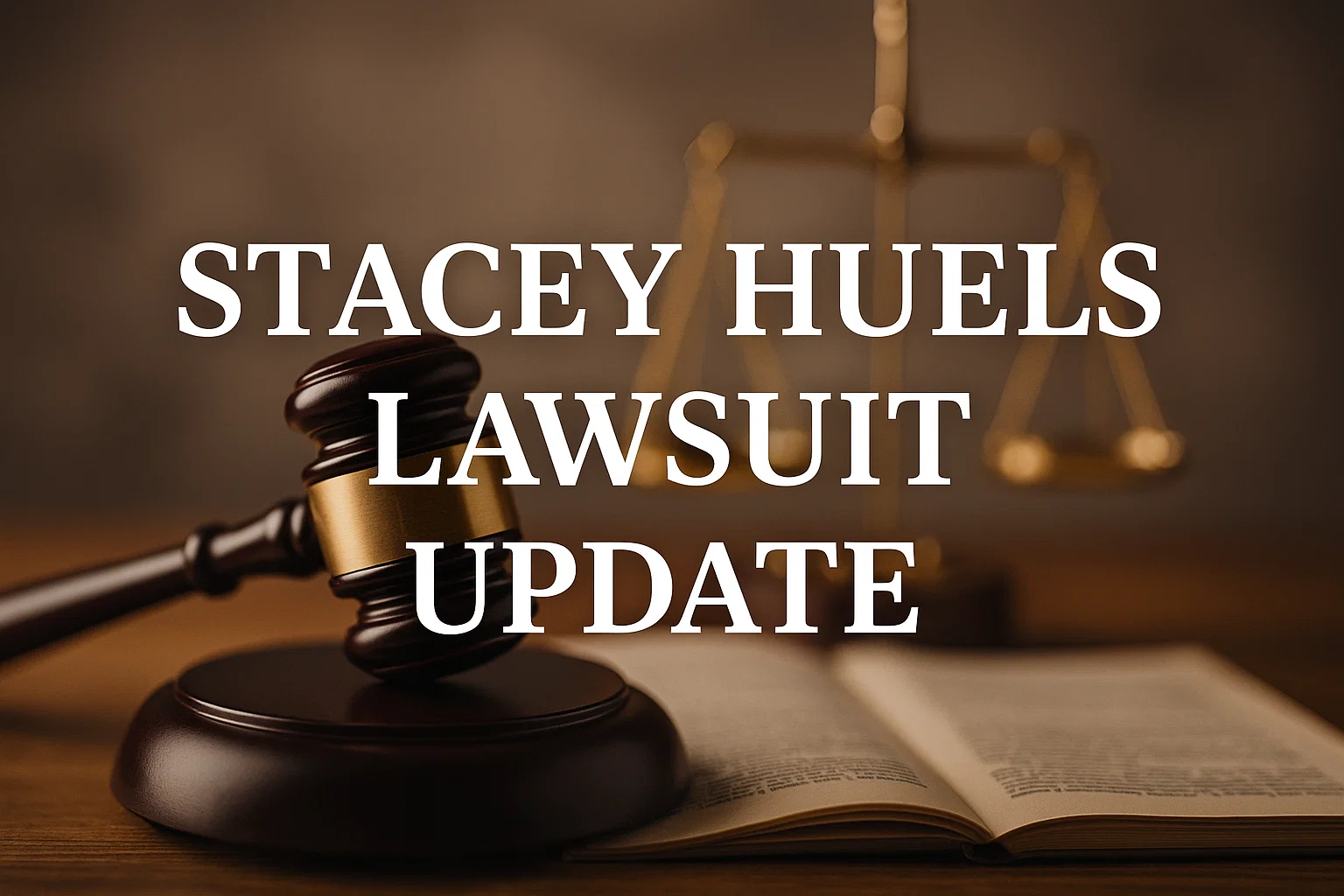Law
Stacey Huels Lawsuit Update: Navigating Executive Accountability in Banking

In recent months, the phrase “Stacey Huels Lawsuit Update” has drawn attention across legal-news circles and financial industry commentary alike. But what exactly is being updated, who is involved, and why does it matter? This article delves into the background of the dispute, outlines the current status, and highlights the broader implications for banking-executive oversight.
Background of the Dispute
At its core, the matter involves Safeco Insurance Company (“Safeco”) and Wheaton Bank & Trust Co. (“the Bank”), with Stacey Huels (who served as President of the Bank) playing a key — though not defendant — role. According to court documents, Safeco claimed that the Bank failed to properly manage certain accounts tied to bonded public-construction projects.
Specifically, the dispute centered on how the Bank distinguished between “bonded” versus “non-bonded” accounts, how it supervised and documented these, and whether any lax practices could amount to negligence or breach of fiduciary duty.
Stacey Huels, while not personally sued, provided an important deposition in the case. Her testimony explained the Bank’s internal procedures for handling these account types, the oversight mechanisms in place, and how the Bank believed its practices conformed to industry standards.
The Role of Stacey Huels in the Litigation
While the spotlight is often on defendants, this case illustrates how executive leadership — even without direct liability — can still shape litigation and regulatory outcomes. Stacey Huels’s role is best understood through several lenses:
- Operational credibility. Her testimony provided the court with clarity on the Bank’s processes. For example, she explained how bonded accounts—which carry higher risk due to the involvement of surety bonds and public-contract requirements—were subject to stricter oversight.
- Defensive value to the Bank. By demonstrating that procedures were in place and operated by senior management, the Bank reinforced its argument that it did not act recklessly or in gross negligence. This underscores how leaders’ knowledge can aid a corporate defence.
- Reputational stakes. Even though Huels was not sued, the case touches on governance, transparency, and executive accountability in financial services. Her involvement signals that executives can be drawn into legal narratives even when not defendants.
In short, the “Stacey Huels lawsuit” cannot be reduced to a simple personal lawsuit; rather, it is the Bank’s case — with Huels acting as a proxy for understanding internal controls.
Current Status & “Update” Insights
So what does the “update” add? Here are the main take-aways:
- The available public documents show that the court ultimately sided with the Bank, finding insufficient evidence of gross negligence. According to one summary, while procedures could have been clearer, the Bank’s practices did not meet the legal threshold for the kind of liability Safeco alleged.
- There is no clear indication of additional direct litigation against Stacey Huels personally in the publicly accessible materials at this time; the litigation remains primarily between Safeco and the Bank.
- Given how recent some coverage is, the term “update” likely refers to newer commentary, educational analyses, or legal-industry write-ups (rather than major new motions). For example, some sites have posted reflective pieces on “executive legal battles in banking” using the case as a spring-board.
Therefore, if you have encountered “Stacey Huels Lawsuit Update” in a headline, it most likely means the case’s key result has been digested by media & financial governance commentary, rather than a fresh court filing.
Why This Matter Matter Matters
The significance of this case (and the so-called “update”) extends beyond its immediate party names. Here’s what makes it relevant:
Executive Oversight and Legal Risk
In banking and financial institutions, senior executives are expected to understand operations, controls, risk assessment, and regulatory compliance. Even when an executive is not personally named in a lawsuit, the chain of decision-making can come under scrutiny. This case underscores that gap.
Documentation, Process & Transparency
The case hinged on internal procedures: how bonded accounts were handled, how oversight differed from non-bonded accounts, and how documentation conveyed that oversight. The lesson: banks must have robust, transparent, and well-documented processes for higher-risk account types.
Liability Thresholds in Banking Disputes
The ruling suggests that procedural deficiencies alone may not trigger liability unless there is demonstrable recklessness or gross negligence. Simply having imperfect procedures is not enough for a finding of liability under the particular facts of this case. Therefore, governance frameworks need not be flawless, but they must show reasoned process and oversight.
Executive Testimony as Business Tool
For the Bank, Stacey Huels’s deposition was a strategic asset—an executive explaining and defending procedures. For other banks or financial firms, this highlights why executives should be prepared for legal-risk exposure even when they are not named defendants.
Key Takeaways for Stakeholders
If you’re a banking executive, a compliance officer, a corporate governance professional, or simply someone following financial-legal news, here are practical insights:
- Know the “what and why” of your high-risk operations. If your institution handles specialized account types (like bonded public-project accounts), ensure that your team understands the risk, oversight, and how you document distinctions.
- Keep senior leadership informed and engaged. Executives may need to speak to practices, protocols, differences in account handling, and how exceptions are managed. This is not just audit paperwork—it’s potential litigation testimony.
- Document oversight and nuance. In the event of a dispute, it may not be enough to say “we have procedures”; rather, show how the procedures were applied, monitored, and reviewed.
- Distinguish between procedural glitch vs. negligence. The legal standard leans toward requiring more than mere procedural ambiguity to find wrongdoing. Firms must aim for oversight, not perfection—but enough oversight to demonstrate reasonableness.
- Communication matters—internally and externally. If issues surface, leadership’s clarity about how the institution responds, documents, and monitors these issues can impact litigation and reputation.
What to Watch Going Forward
While the “Stacey Huels Lawsuit Update” suggests that the major dispute is largely resolved insofar as public documents show, a prudent observer might track:
- Any appeals or further filings connected to the underlying case. If Safeco or the Bank seek further proceedings, future “updates” may reflect that.
- Any regulatory commentary or enforcement action that arises from similar facts—since cases like this can spur regulators to revisit oversight rules for banks.
- Academic or industry-specific analysis using this case as a precedent for how executive leadership can impact legal defence—watch for articles or legal-industry publications.
- Internal governance changes at banks or trust companies that reference this case, in the sense of “lessons learned” for handling specialized account types or public-project funds.
Read also: Utanmazkzılar: The Bold Movement Redefining Confidence and Authenticity
Closing Thoughts
The term “Stacey Huels Lawsuit Update” may read like a fresh legal filing, but in truth it reflects a broader shift in how the case is being interpreted within banking governance circles. The key takeaway is less about a surprise new motion and more about what this litigation tells us about executive accountability, internal processes, documentation and legal exposure in the financial-services sector.
While Stacey Huels herself is not recorded as a defendant, her role in providing senior-leadership testimony signals to all financial institutions that executive involvement in operations matters—and may matter legally. As banks continue to face regulatory and litigation risk over specialised accounts and public-project funds, the practical lessons from this dispute will continue to resonate.
If you like, I can attempt to check legal-docket databases for very recent filings (within the last 30 days) referencing this case to verify if any new motions, appeals or settlements have emerged.

-

 Celebrity6 months ago
Celebrity6 months agoWho Is Maria Dylan? The Untold Story of Bob Dylan’s Daughter
-

 Celebrity7 months ago
Celebrity7 months agoJelani Asar Snipes: The Rising Actor You Need to Know About
-

 Uncategorized7 months ago
Uncategorized7 months agoShannon Millard: Inspiring Success Stories and Achievements You Should Know
-

 Uncategorized7 months ago
Uncategorized7 months agoEverything You Need to Know About Stella Busina Matthews: A Comprehensive Guide
-

 Celebrity7 months ago
Celebrity7 months agoTimothy Byers Affleck: The Father Behind Ben and Casey Affleck
-

 Celebrity7 months ago
Celebrity7 months agoWho is Jane Elizabeth Ebsworth Oriel? The Untold Story of David Attenborough’s Wife
-

 Uncategorized6 months ago
Uncategorized6 months agoWho is Karima Jackson? The Untold Story of Ice Cube’s Daughter
-

 Uncategorized6 months ago
Uncategorized6 months agoDiscovering Andrea Skeete: A Rising Star in Personal Development and Community Engagement












